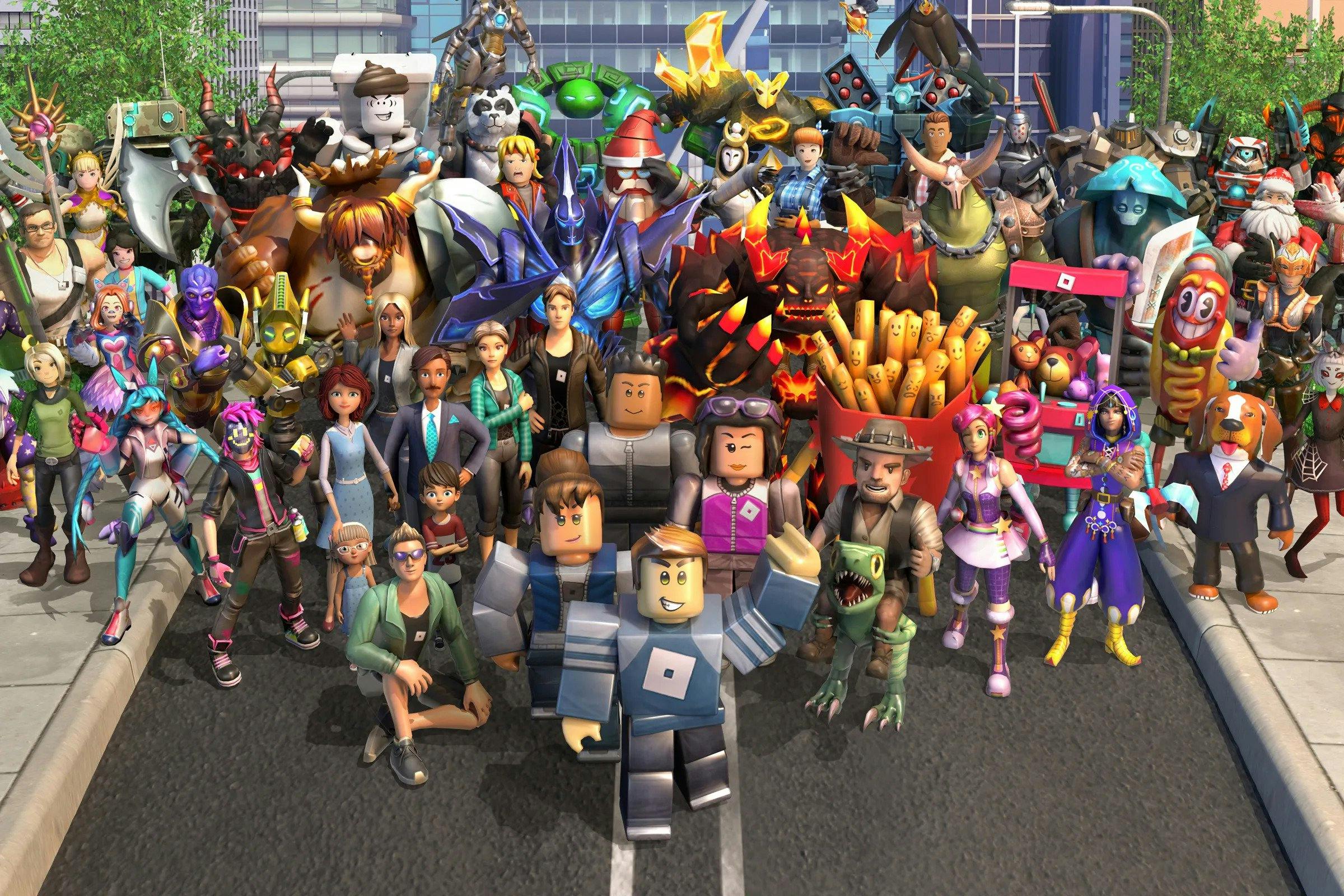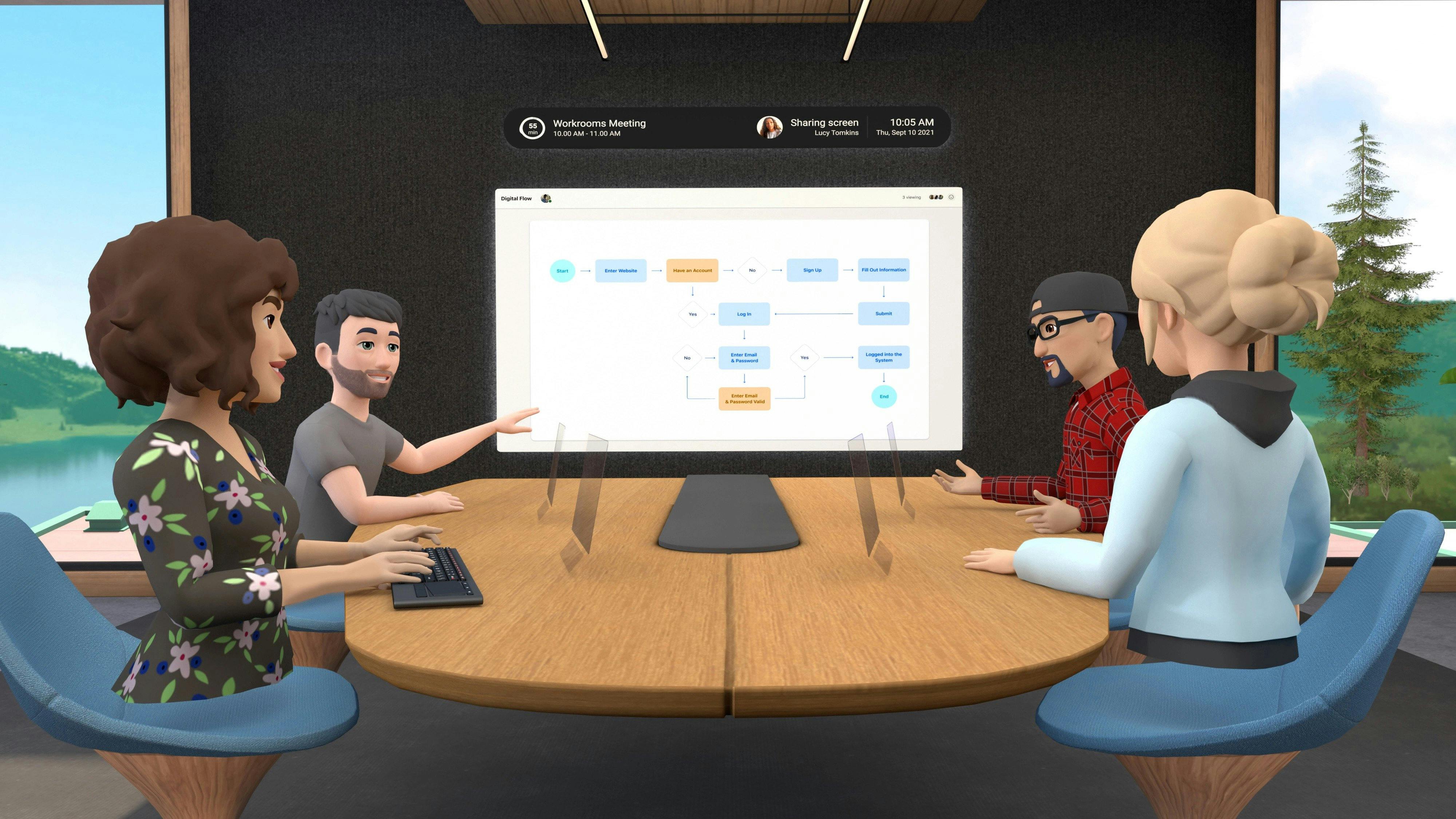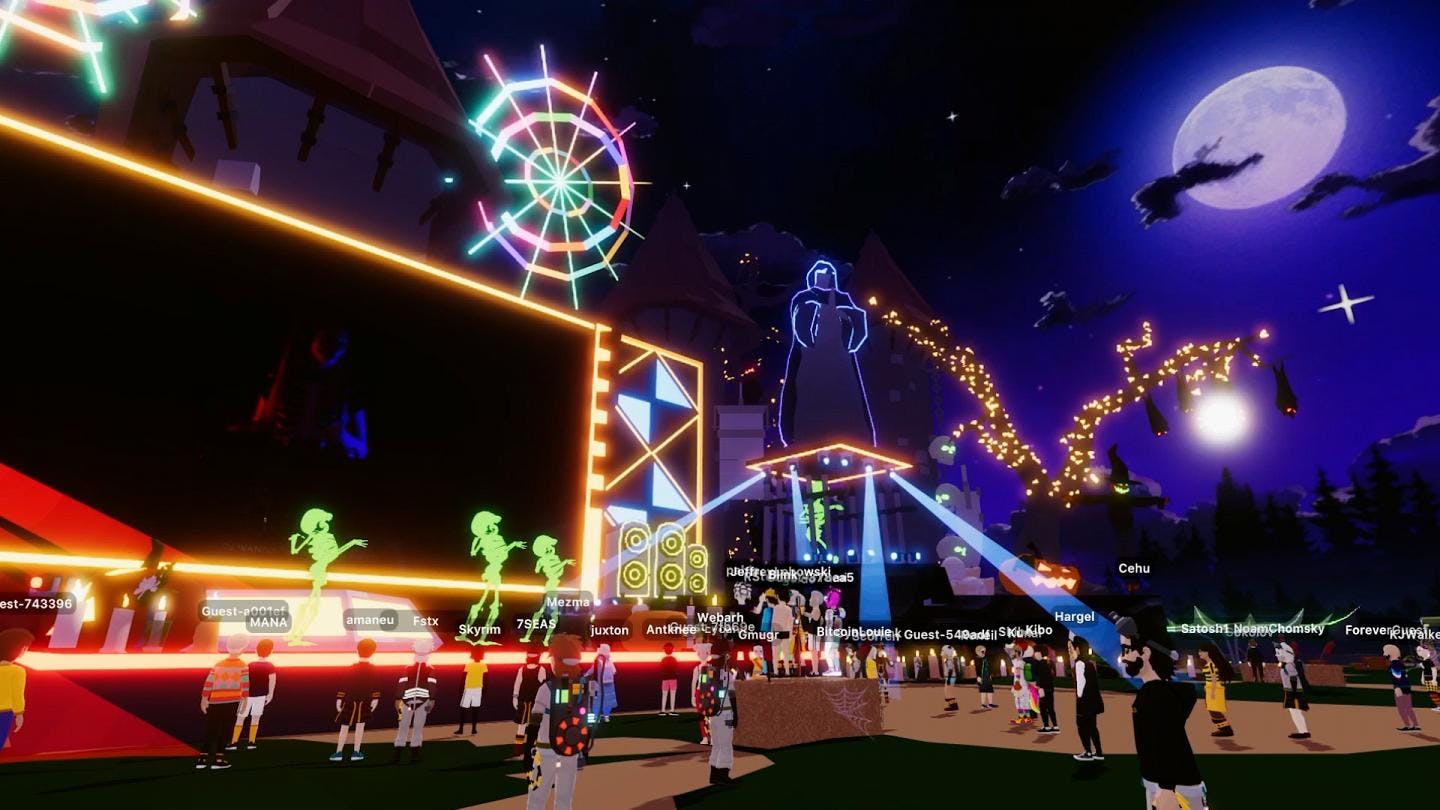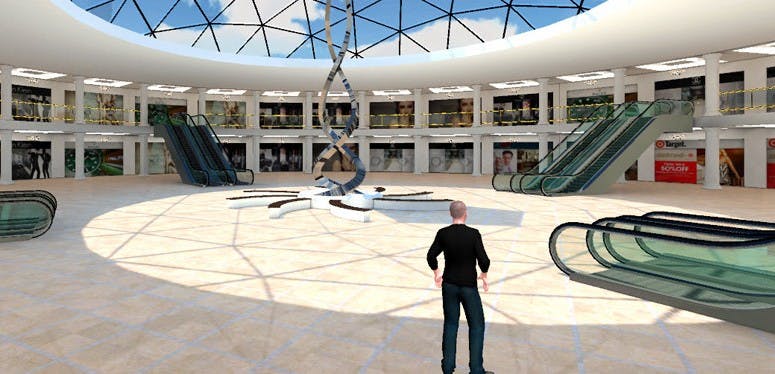Why Should Businesses Care About The Metaverse?
Growing interest in virtual reality worlds may present new opportunities for savvy businesses.
Table of contents
Beyond its appearance in Neal Stephenson’s Snow Crash, “metaverse” was a largely obscure term. Most people aware of the metaverse pre-2021 had either participated in virtual worlds like Second Life or played extended-reality online games like Roblox, Minecraft, or Fortnite.
But then Facebook changed its name to “Meta” in late 2021, reflecting owner Mark Zuckerberg’s dream to “build the Metaverse.” Describing the metaverse as “a shared virtual world where [anyone] can socialize, work, play, and create,” Zuckerberg predicted it'd be the next iteration of the Internet, and committed Facebook’s (now Meta) future to creating it.
With one of the world’s biggest tech giants betting the farm on the metaverse, interest in the concept has skyrocketed. More importantly, businesses are looking for opportunities to tap into the metaverse and harness this technology for bigger profits.
In this article, we’ll explore the meaning of the metaverse and consider opportunities for businesses to leverage this new technology.
What is the Metaverse?
At its most basic, the metaverse is a collection of immersive, three-dimensional (3D) worlds that facilitate virtual interaction between individuals. In a metaverse, people can perform real-world activities—learning, creating, socializing, shopping—in cyberspace.
The metaverse runs on augmented reality (AR), virtual reality (VR), extended reality (XR), artificial intelligence, and spatial computing technologies. Individuals rely on devices, such as smartphones, laptops, IoT devices, and VR/AR products like Google’s Oculus VR headsets or Microsoft’s HoloLens to access the metaverse and interact with it.
Blockchain technology is also crucial to the metaverse. With non-fungible tokens (NFTs), anyone can create unique digital assets, such as avatar skins and accessories, that can be used in a virtual universe. Cryptocurrencies power the metaverse economy and allow users to pay for products or access certain services.
Futurists imagine the metaverse as a giant virtual world, where websites become gateways to virtual spaces. However, what exists currently is the "proto-verse": a group of independent virtual worlds with worlds with different users, access mechanisms, and monetization systems.
Realizing the metaverse dream will transform the Internet into a massive, interoperable virtual realm. Users can seamlessly switch between digital worlds, using their assets on different platforms. For example, an avatar skin bought in Fortnite would be usable on Decentraland.
Facebook announced its metaverse plans last year. Source: YouTube
Is the Metaverse Here?
Contrary to public expectation, the metaverse is far from becoming a full-fledged reality. Even Facebook has said it doesn’t expect the technology required to power the metaverse to arrive until the next 10-15 years.
However, we have some examples to show what a metaverse future may look like:
Roblox: Roblox is a gaming platform that allows users to create and play across virtual worlds. Creators can monetize their games by selling in-game assets to users through Robux, the platform’s virtual currency. This virtual currency can be converted to real money on the Roblox Developer Exchange (DevEx).
 Virtual gaming platform Roblox has become a runaway hit. Source: Wired.com
Virtual gaming platform Roblox has become a runaway hit. Source: Wired.com
Fortnite: Fortnite started life as a free-to-play multiplayer shooting game, quickly gaining popularity for its realistic gameplay. But it’s slowly transforming into a bigger virtual world, with rapper Travis Scott holding a virtual concert on the platform in April 2020.
Travis Scott’s “Astronomical” concert was held on Fortnite. Source: YouTube
Facebook Horizon and Microsoft Mesh: Facebook released Horizons Works, a virtual workspace, to compete with Zoom and Microsoft Teams. Using headsets from Facebook-owned Oculus VR, employees can interact, collaborate, and brainstorm without needing to meet physically.
Microsoft launched a competing product, Mesh, signaling the company’s interest in metaverse technology. Like Facebook’s Horizons, Microsoft Mesh can create “digital twins” of physical workspaces, enabling virtual interactions between coworkers.
 Facebook plans to reimagine remote work with Horizon Workrooms. Source: about.fb.com
Facebook plans to reimagine remote work with Horizon Workrooms. Source: about.fb.com
Decentraland and The Sandbox: Decentraland is a 3D virtual world where anyone can build digital structures, such as theme parks or art galleries, and charge visitors a fee. It runs on the Ethereum blockchain and allows users to buy digital assets as NFTs using its native token ($MANA).
The Sandbox is another gaming metaverse running on the Ethereum blockchain. Like Decentraland, Sandbox users can create and sell unique digital assets as NFTs. Purchases are made using the ecosystem’s native currency ($SAND).
 Players can visit virtual parks in Decentraland. Source: Euronews.com
Players can visit virtual parks in Decentraland. Source: Euronews.com
Second Life: Second Life is one of the oldest and most popular 3D virtual worlds. Launched by Linden Labs in 2003, Second Life lets individuals—represented by avatars—can carry out real-life activities in an immersive virtual world. Users can create, shop, socialize, and do much more in Second Life’s virtual spaces.
Why the Metaverse Matters for Businesses
While the metaverse is still in its infancy, dismissing it would be economic suicide for any business. Beyond tech giants like Microsoft and Facebook, other large brands have been making forays into the metaverse. For instance, fashion heavyweight Gucci launched a virtual gallery recently, while JP Morgan recently opened a building in Decentraland.
As an immersive virtual-reality world, the metaverse has a lot of business potential. Here are some benefits of the metaverse for business that every entrepreneur should consider:
Profits from Virtual Products
The virtual economy is booming. Sales of digital assets on virtual platforms like Decentraland, Fortnite, Roblox, and the Sandbox run into millions of dollars—representing a viable business opportunity. Brands can create virtual lookalikes of real-life products to metaverse residents and unlock new streams of revenue.
The list of companies already selling things in the metaverse is long. Earlier this year, Ralph Lauren launched a collection of wearables and has sold over 100,000 pieces already. Other luxury fashion houses, such as Gucci and Dolce & Gabbana, have also started creating virtual clothing lines.
Even sports apparel makers are getting in on the game. American sportswear giant Nike acquired RTKFT, a company noted for creating virtual products and has filed patents that’ll allow it to exclusively sell Nike-themed wearables, like Air Jordan sneakers, in the metaverse.
Smaller businesses can benefit from this trend, too. For example, a glasses manufacturer might offer buyers a pair as an NFT, while encouraging them to buy the real thing. As long as a product can be represented in virtual reality, there’s going to be a market for it.
 Gucci “Virtual 25” shoes are created exclusively for AR worlds. Source: Deezen.com
Gucci “Virtual 25” shoes are created exclusively for AR worlds. Source: Deezen.com
Richer Customer Experiences
The introduction of eCommerce changed the way people shopped for products. However, customers are quickly outgrowing staid online shopping sites. They want an experiential buying experience where they can feel, see, and touch products before buying.
Companies can provide new ways for consumers to interact with products and services using augmented reality (AR) and virtual reality (VR) technologies. Instead of staring at static images, buyers can use products and see if they like the experience. If an individual feels good trying on virtual glasses, they’re more likely to buy the real product.
Some brands are already launching virtual malls, where anyone can come in and interact with branded items. Such innovations will greatly accelerate the buyer’s journey, reduce acquisition costs, and increase overall revenues.
 Virtual malls may become the new shopping centers. Source: Datumcorp.com
Virtual malls may become the new shopping centers. Source: Datumcorp.com
Global Reach
Just as the Internet broke down geographical boundaries, the metaverse will do the same—but better. An ideal metaverse is a place where anyone can enter and interact with a brand, regardless of their location. For brands, the metaverse facilitates the creation of universally accessible experiences for customers across the world.
Often, global companies will launch different campaigns in various countries to compensate for distance. However, the metaverse world would allow a brand to house its campaigns in one place, which users from different regions can access at any time. It’s global expansion for a fraction of the cost!
Better Employee Engagement and Collaboration
Facebook’s demo of Horizons Workspaces has shown how virtual worlds can transform modern-day workplaces. In a post-COVID era, where remote work is becoming a norm, the metaverse can greatly enhance collaboration between employees.
Instead of staring at a Zoom screen for hours, individuals can collaborate, brainstorm, and discuss in a shared, virtual workspace. The metaverse will create an interactive environment where everyone, irrespective of their location, can connect with each other and share ideas.
For businesses, the use of metaverse in business communications can make collaboration, training employees, and organizing meetings easier.
A demonstration of Microsoft’s VR workplace. Source: YouTube.com
Improvements in Product Development
Many products fail to attract meaningful use due to poor product-market fit. While this can be corrected through product testing, current methods are costly and require extensive effort.
The metaverse can solve this problem for companies and ease product testing through the use of "digital twins." According to IBM, a digital twin is a complex, hyper-realistic virtual representation of a physical object.
Thanks to improvements in VR and AR technology, it’s possible to simulate real-life experiences in the metaverse. This means companies can have individuals test products under development and give useful feedback.
Several high-profile people, including NVIDIA CEO Jensen Huang, have backed the idea of VR-enabled product testing. And some companies, like Hyundai Motors, have made forays into the field already.
Using Roblox, the South Korean carmaker created Hyundai Mobility Adventure, a shared virtual space for people to try out its newest offerings. Visitors, represented by avatars, can test-drive new Hyundai models, robotic vehicles, and other transportation solutions.
Companies can also better understand how users interact with their products using VR-powered testing. By analyzing body language recordings obtained through VR simulations, businesses can gain deeper insights into customer behavior and apply the information to product development.
The wealth of data that can be obtained about consumers is staggering. For instance, a 2018 Stanford Review estimates that VR headsets can collect over two million body language recordings within a 20-minute timeframe.
Advertising Opportunities
Every technology brings with it novel techniques for getting products in front of customers. The Internet brought targeted advertising, while outdoor displays brought interactive billboards, drones, etc.
However, businesses need to avoid ruining the user experience with ads. As the public backlash against targeted advertising has shown, intrusive promotions can quickly sour consumer sentiment.
Instead, companies must invest in creating richer experiences and encourage users to participate. An excellent example of customer-centric marketing in the metaverse is Coca-Cola's Friendship Day campaign.
The beverage company auctioned a "Friendship Box" on OpenSea, which contained several NFTs. This included a themed bubble jacket that the owner could wear in Decentraland, a Friendship Card NFT featuring retro artwork, and a sound visualizer that played the sound of pouring a Coke. The winning bidder also received a real-life fridge stocked with Coca-Cola drinks.
Coca-Cola’s metaverse marketing is different from the in-your-face promotion that irritates consumers and affects marketing performance. As more companies enter the metaverse, those that invest in consumer-centric marketing will come out tops.
 Coca-Cola's bubble jacket, auctioned as part of its NFT drop. Source: Forbes.com
Coca-Cola's bubble jacket, auctioned as part of its NFT drop. Source: Forbes.com
How Can Businesses Enter the Metaverse?
It’s still early to know if the metaverse will become the latest technology revolution. Nonetheless, entrepreneurs can future-proof their businesses by preparing for a future where the lines between physical and virtual reality are indistinguishable.
Businesses can start their metaverse journey by identifying target demographics and understanding their preferences. Given the flurry of corporate forays into the metaverse, it's possible to borrow ideas from other brands and create a unique experience for a brand's user base.
Finally, as with every investment, understanding the risks of buying into the metaverse is important. There's no telling if the metaverse will take off or not, so caution is advised.
Cover photo by Julien Tromeur on Unsplash

